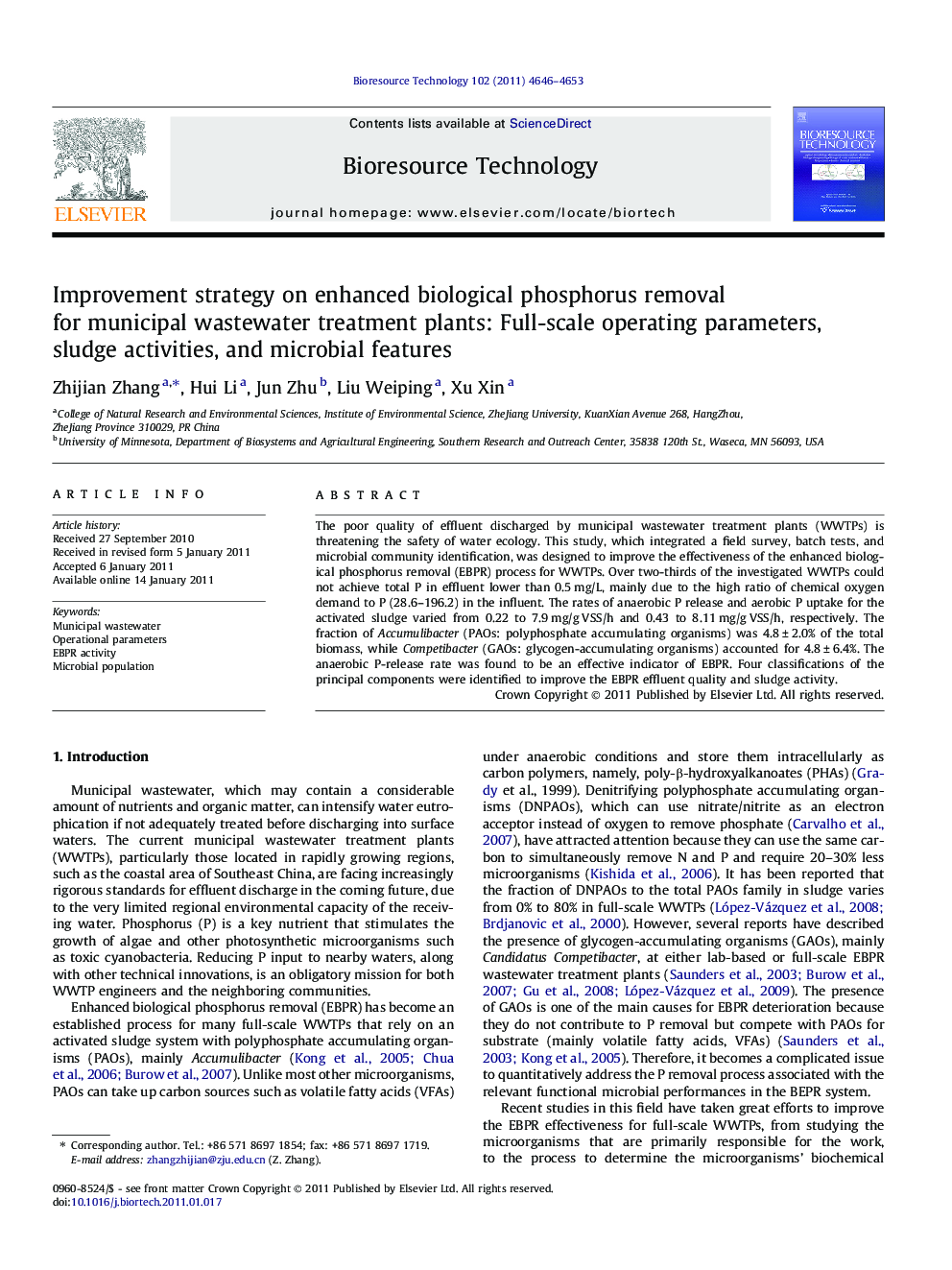| کد مقاله | کد نشریه | سال انتشار | مقاله انگلیسی | نسخه تمام متن |
|---|---|---|---|---|
| 10395165 | 888971 | 2011 | 8 صفحه PDF | دانلود رایگان |
عنوان انگلیسی مقاله ISI
Improvement strategy on enhanced biological phosphorus removal for municipal wastewater treatment plants: Full-scale operating parameters, sludge activities, and microbial features
دانلود مقاله + سفارش ترجمه
دانلود مقاله ISI انگلیسی
رایگان برای ایرانیان
کلمات کلیدی
موضوعات مرتبط
مهندسی و علوم پایه
مهندسی شیمی
تکنولوژی و شیمی فرآیندی
پیش نمایش صفحه اول مقاله

چکیده انگلیسی
The poor quality of effluent discharged by municipal wastewater treatment plants (WWTPs) is threatening the safety of water ecology. This study, which integrated a field survey, batch tests, and microbial community identification, was designed to improve the effectiveness of the enhanced biological phosphorus removal (EBPR) process for WWTPs. Over two-thirds of the investigated WWTPs could not achieve total P in effluent lower than 0.5 mg/L, mainly due to the high ratio of chemical oxygen demand to P (28.6-196.2) in the influent. The rates of anaerobic P release and aerobic P uptake for the activated sludge varied from 0.22 to 7.9 mg/g VSS/h and 0.43 to 8.11 mg/g VSS/h, respectively. The fraction of Accumulibacter (PAOs: polyphosphate accumulating organisms) was 4.8 ± 2.0% of the total biomass, while Competibacter (GAOs: glycogen-accumulating organisms) accounted for 4.8 ± 6.4%. The anaerobic P-release rate was found to be an effective indicator of EBPR. Four classifications of the principal components were identified to improve the EBPR effluent quality and sludge activity.
ناشر
Database: Elsevier - ScienceDirect (ساینس دایرکت)
Journal: Bioresource Technology - Volume 102, Issue 7, April 2011, Pages 4646-4653
Journal: Bioresource Technology - Volume 102, Issue 7, April 2011, Pages 4646-4653
نویسندگان
Zhijian Zhang, Hui Li, Jun Zhu, Liu Weiping, Xu Xin,